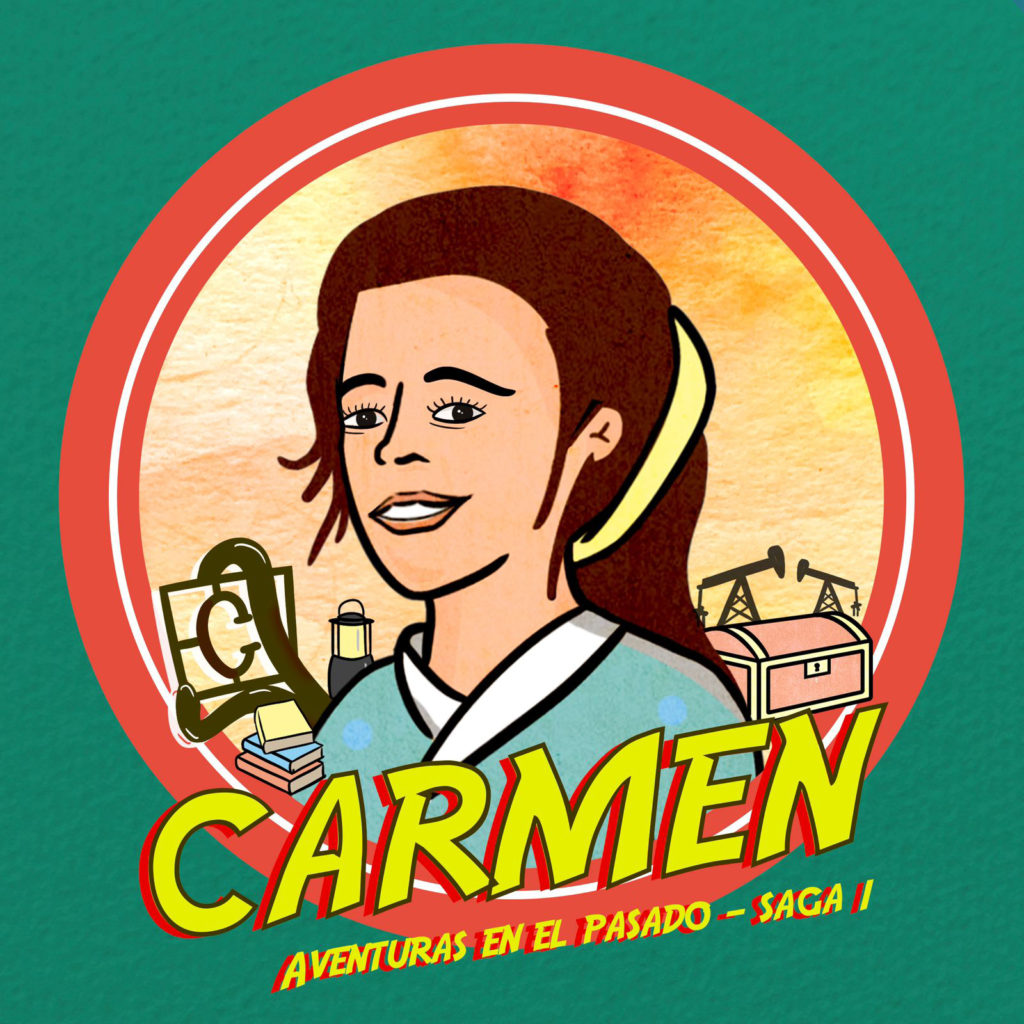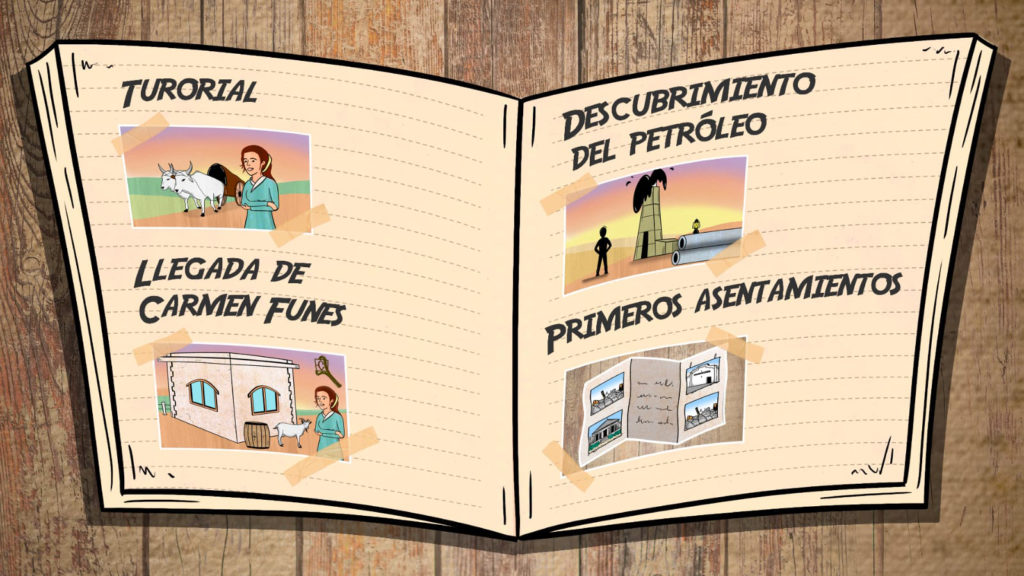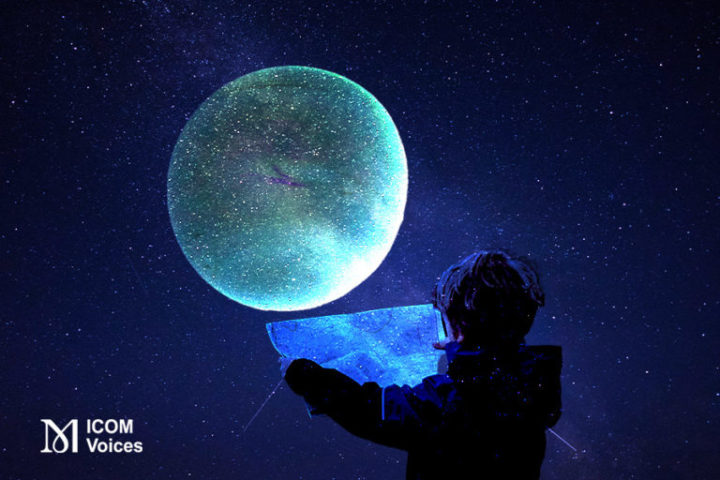
Florencia Croizet
Specialist in Cultural Industries in the Digital Convergence (UNTREF, Buenos Aires, Argentina)
Museums have no borders,
they have a network
April 23, 2024
Pioneering projects in Argentina
The international museum field is currently focused on adapting its proposals to 21st-century consumer habits, creating new alliances between sectors. This explains why different gamified projects based on cultural heritage collections have been developed in the northern hemisphere in the past few decades. These normally consist of video games developed with large budgets that would be impossible to replicate in the context of unstable economies such as Argentina. Nonetheless, in the past three years the Museo Histórico Sarmiento (Buenos Aires) and the Archivo-Museo Carmen Funes (Neuquén, Plaza Huincul) have both succeeded in producing two video games based on their assets, both aimed at children. The first, entitled Búsqueda Interestelar [Interstellar Quest], belongs to the platform game genre, while the second, Carmen Funes, aventuras en al pasado [Carmen Funes, adventures in the past] belongs to the graphic adventure game genre. Búsqueda interestelar’s narrative is based on the creation of the Astronomical Observatory in Córdoba, a project developed during the presidency of Faustino Sarmiento. Combining fictitious and historical characters with astronomical phenomena and play-based challenges, it encourages players to find the director of the Observatory, who has been kidnapped by extraterrestrials. The second game invites the player to reconstruct the history of Plaza Huincul, in Argentine Patagonia, guided by Carmen Funes, one of its historical figures. Both use cultural heritage and history as essential play-narrative elements.


Production and management of funding
The production funds came from credit lines awarded to specific cultural projects. Búsqueda Interestelar received the ‘New technologies’ funding awarded via the Sponsorship scheme of the City of Buenos Aires, which promotes indirect funding: the municipal state approves the project and decides on the budget, the project manager must then secure a private sponsor, for whom the project is tax deductible from its annual gross income. In this case the sponsor was Banco Galicia, which contributed 1,500 US dollars. Carmen Funes, aventuras en al pasado secured a direct subsidy of 2,500 US dollars through the Culture Code programme organised by the NGO Wikimedia Argentina. From the outset to the launch of the projects, the time frame for execution was between twelve and eighteen months.
After funding was obtained the working groups were formed. With its smaller budget, Búsqueda Interestelar brought together four people: a professional who fulfilled the roles of coordinator, manager and game designer, and a programmer, an audio and sound producer, and a 2D artist – the last three were students at the time. Carmen Funes, aventuras en al pasado fared better as it was able to count on professionals and even on an educational adviser.
Video of Búsqueda Interestelar.

As ambitious projects with low budgets, forging alliances was essential. In the case of Búsqueda Interestelar the experience from a previous project, Game Lab (Universidad Maimónides) was invaluable during the production phase. With regard to the Carmen Funes project, the organisation Wikimedia Argentina provided the funding and also advised on production. This type of support is essential for cultural heritage professionals who have no experience in the production of video games, articulating objectives and building communication bridges between worlds of different timings and logics.
Obstacles along the way
The most difficult obstacles to overcome were those generated by the institutional processing, lasting four years and reliant on the public bodies on which the museums in question depend. The original project for Búsqueda Interestelar had two principal objectives. Firstly, the gamification of the narrative of a curatorial aspect of the permanent display, which was possible to achieve as it is habitually applied to guided tours and workshops. The second aim was to put forward the content of a national museum located in the country’s capital by making the game freely accessible on the museum’s official website. However, this was never possible (or was never made possible). A simular situation arose with Carmen Funes, aventuras en el pasado, the aim of which was its transformation into an educational tool for the local primary schools. At the time of its launch there was a change in the local administration, resulting in the rejection of the project which was supposed to be made accessible on the museum’s website. The professionals involved were obliged to seek additional funding in order to make it available on Android Playstore.

With regard to impact, both projects had repercussions in local and national media (TV, online media, radio stations, podcasts). Nonetheless, it was difficult to evaluate the impact of these videogames, due to lack of institutional support. The Museo Sarmiento has no relevant data, while the Carmen Funes only has quantitative information on downloads.
Overall, despite low state budgets, regulatory obstacles and the problems of institutional management, both projects were developed through the initiatives of individual professionals – who were able to establish points of contact with financial agents in civil society and the cultural industries – in order to create technological projects which collaborate with education on cultural heritage and its dissemination; in other words, contributing to the fulfilment of the institutional objectives that all museums should have.
Florencia Croizet wrote an article for Museum International: LGBTQI+ Museums (Vol. 72, No. 287-288) published in 2020. Her article, entitled ‘LGBTQI+ Representation in the Museum Ecosystem of Buenos Aires’, is available here.
If you are an ICOM member, you can access all issues of Museum International free of charge through your ICOM member space. If you are unable to access them, please do not hesitate to contact us at publications@icom.museum
